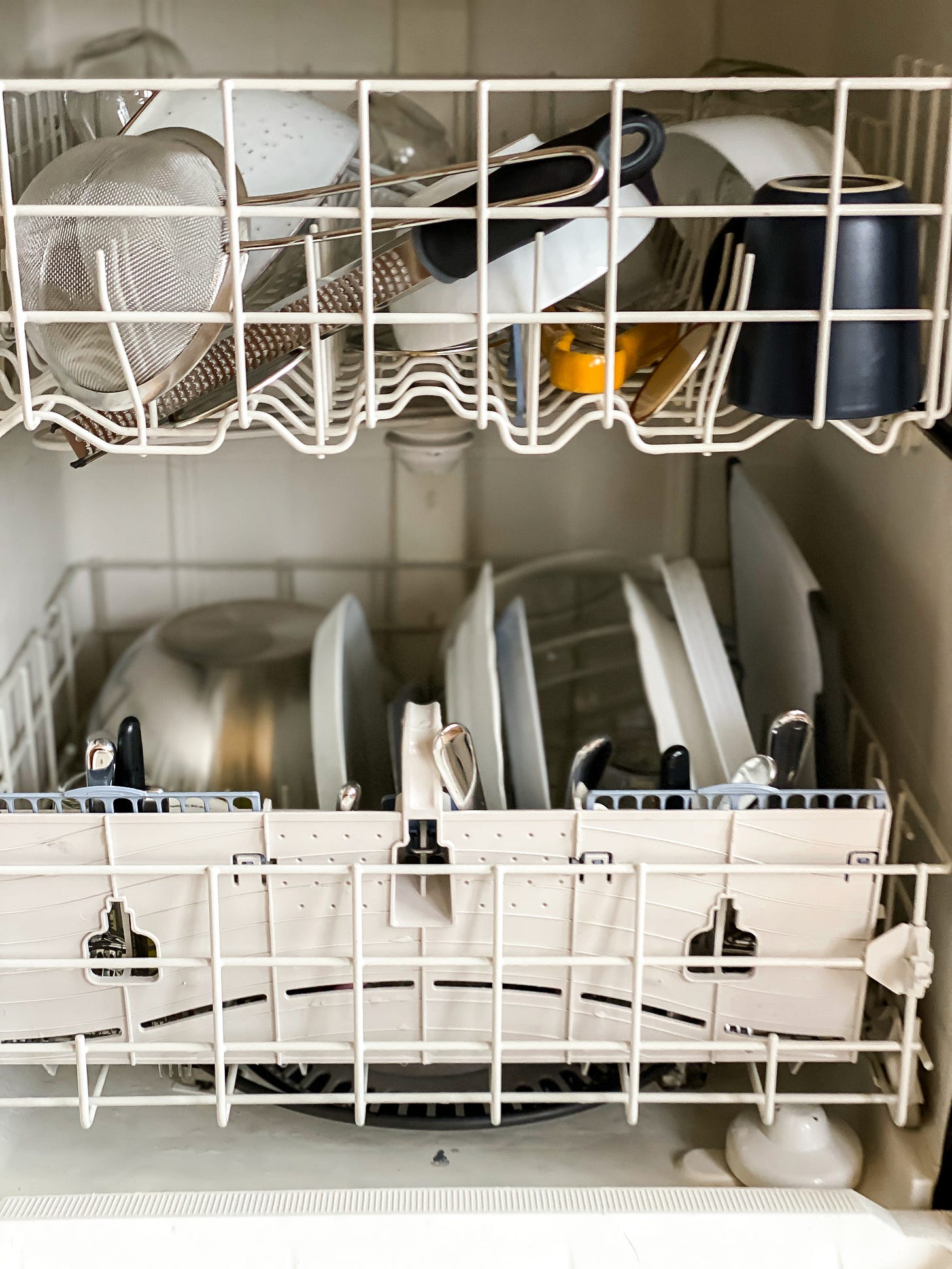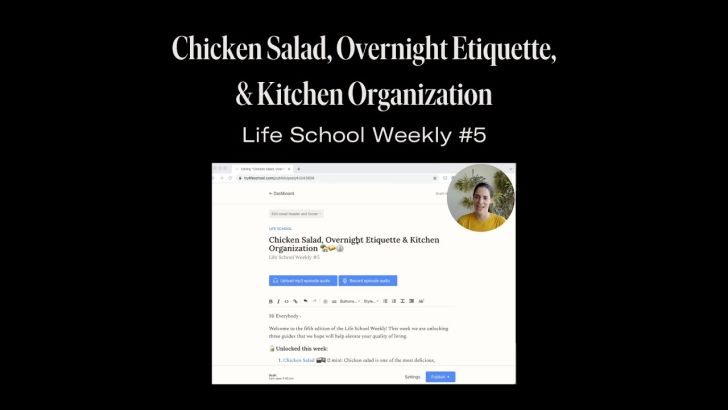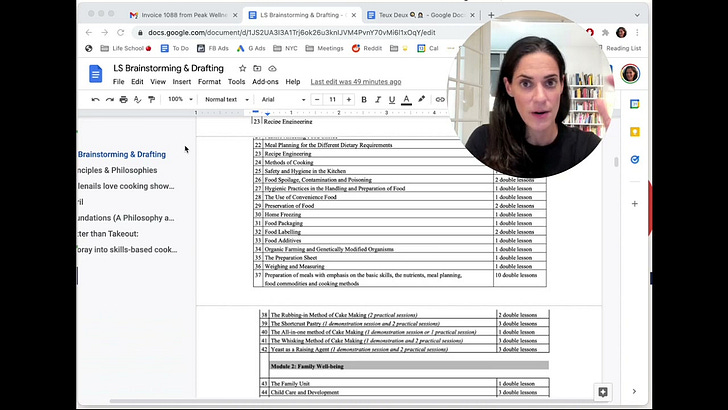Today’s Lesson is 508 words, a 2 min & 1 sec read. Sign up here.
📍 Introduction
Like playing a game of Tetris, loading a dishwasher is a puzzle. Once you master this skill, you will significantly reduce time spent rejiggering, & improve the odds that dishes come out sparkly & clean. No water spots, residue, or broken items for you!
✔ Instructions:
Scrape food off dishes & lightly rinse.
Load sturdiest items (e.g., plates, non-stick pots) in the bottom rack
Load plates with soiled side facing inward & down
Place glasses, mugs, utensils, & dishwasher-safe plastics in the top rack using tines to evenly space & securely hold.
Load cutlery into rack or basket.
Place XL items (e.g., cutting boards) upright along edges, so they don’t block inner dishes from getting hosed down.
Add detergent. Run.
📝 Notes, Tips, Tricks:
Loading:
For cutlery, the best order is... disorder. (A metaphor for life? 🧐) When spoons "spoon," they block one another from water & detergent.
Make sure sharp knives are pointing down. 🙅♀️🔪 → 🤚
Load bowls at an angle to save space.
Do not put these items in the dishwasher: wood, nonstick pots/pans, cast iron, insulated mugs/bottles, high-quality knives.
Chef's knives must avoid the dishwasher — heat, detergent, & knocking other items will dull the edge. This makes them unsafe to chop with since they may slip.
Nonstick is not dishwasher safe because the heat & detergent degrade the nonstick coating. This shortens pan life & also leads to flakes you might accidentally ingest.
The less frequently you run the dishwasher, the more critical the rinse. Food-laden plates can mold if left to sit inside a dark, damp dishwasher.
The bottom rack is hotter than the top. Keep delicate items & plastic on top to avoid damage.
Some dishwashers have safety racks. These help keep wine glasses secured in place so they don't bang other items & crack.
Running:
Light/Eco Mode saves energy & time. Regular Mode is typically wasteful & unnecessary.
Only use dishwasher detergent—soap will overflow with suds. Too much detergent leaves a film.
Rinse aid helps remove spots. It goes in a dedicated dispenser compartment or in a rinse-aid basket in the upper rack.
To save on electricity, run the dishwasher at night, or use a cold cycle with an enzyme detergent (which doesn’t require heat)
Many swear by the “wash at night, unload in the morning” routine. It ensures your dishwasher is ready for new additions during the day.
Overcrowded dishwashers won’t clean as thoroughly since food & water can get trapped between items.
Garbage disposals & dishwashers typically share plumbing. Make sure your drain is clear before hitting the “Start” button.
Care:
Smell your dishwasher every so often to make sure it doesn’t need cleaning. When it does, check the seals & the gunk trap.
Be sure not to use too much detergent; it can clog the filter.
🎓 Further Studies:










